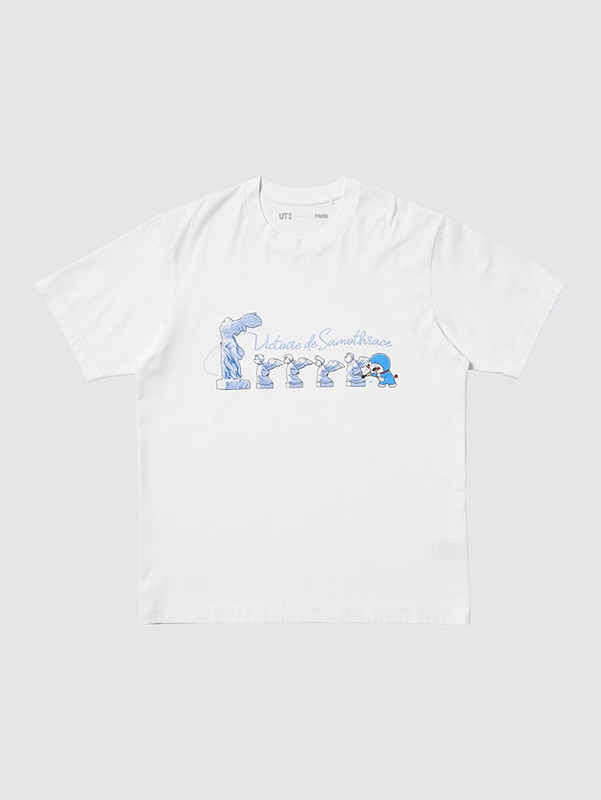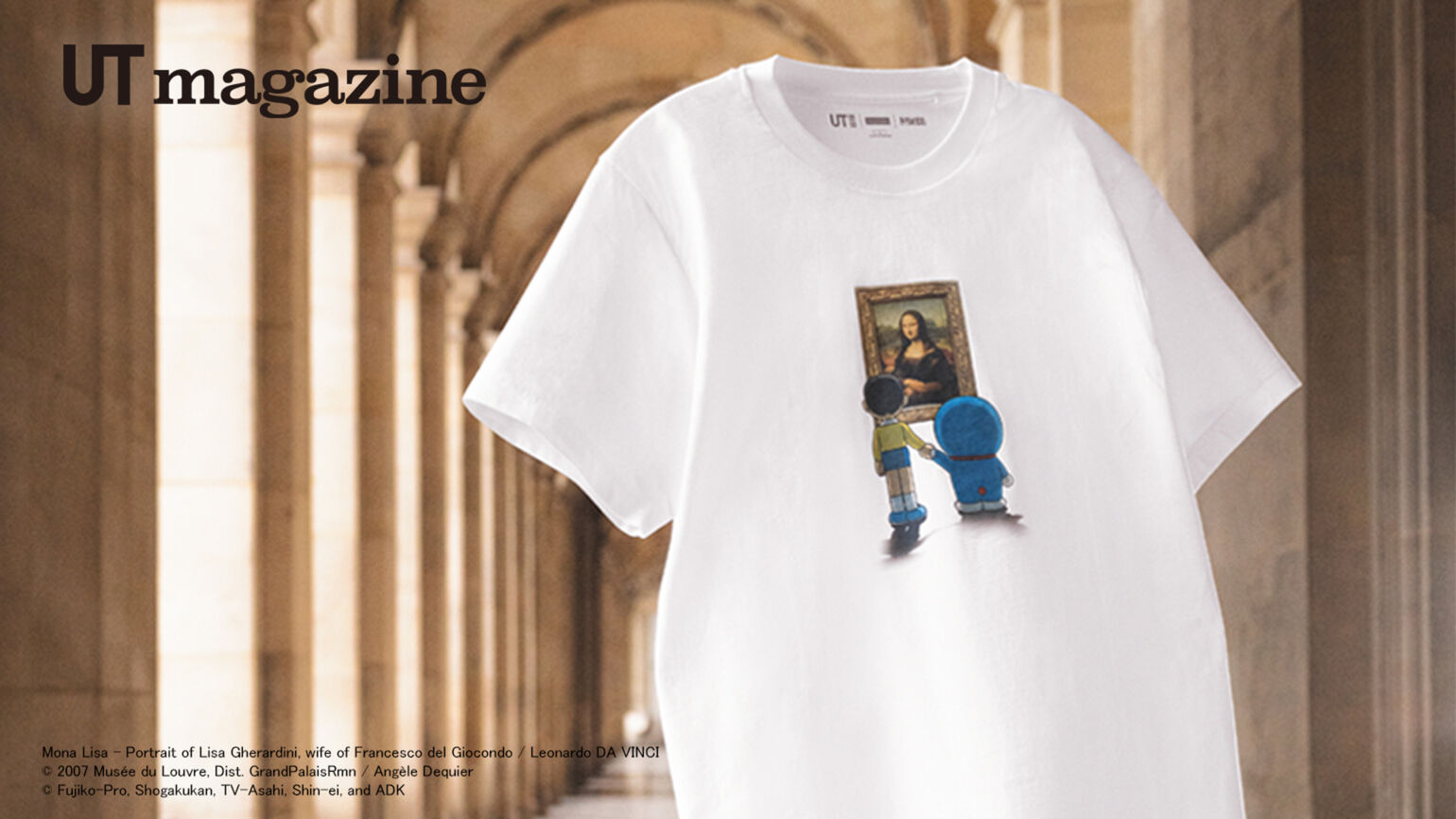
A unique collaboration between Doraemon, the Louvre and UT.
May 28, 2025
UT
UT
is bringing the museum together with Doraemon, an iconic Japanese manga character, for a special collaboration. Let's dive into the world of art with Doraemon!View items
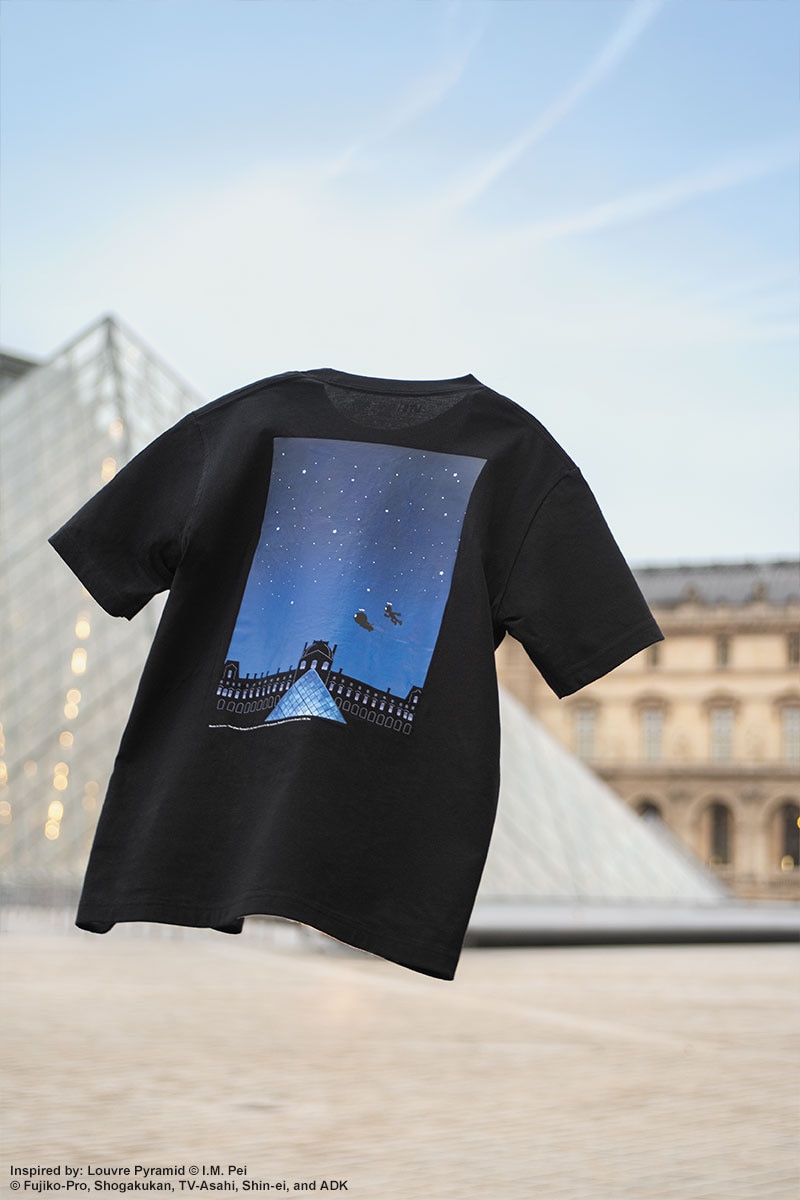
Louvre Pyramid
Designed by Ieoh Ming Pei and constructed with glass and serves as the museum's main entrance. The harmony between this cutting-edge design and the historic architecture of what was once a royal palace is cherished as a symbol of Paris.
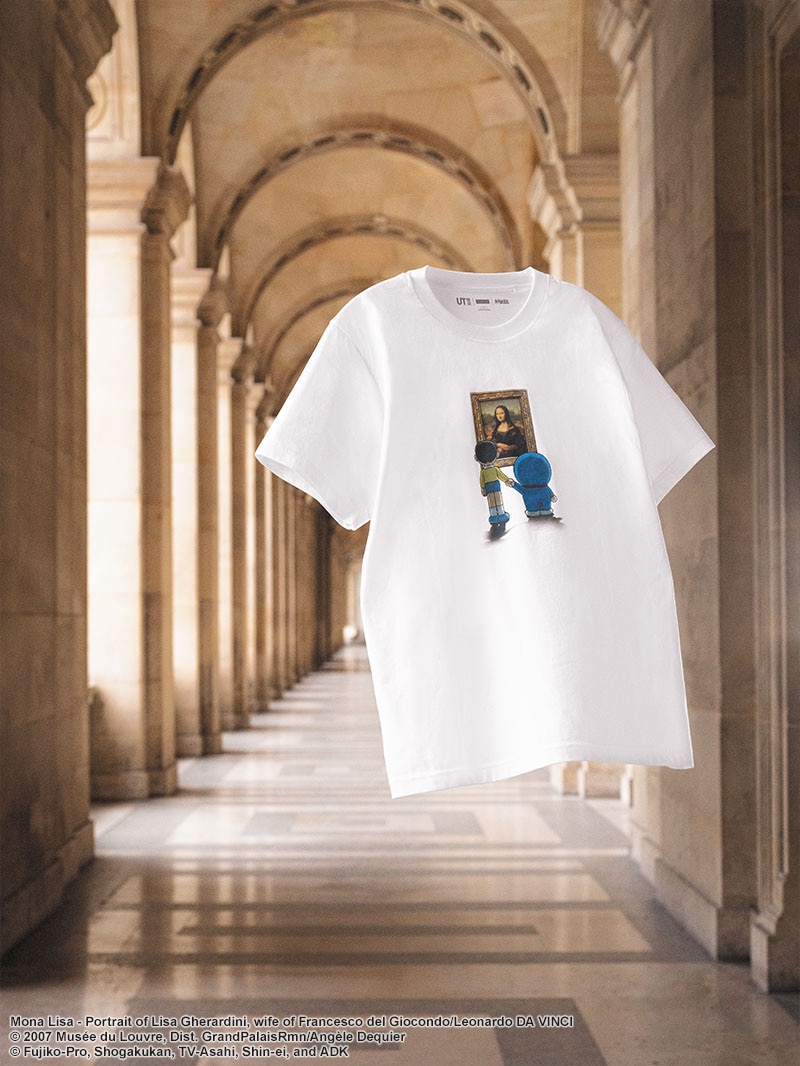
Mona Lisa
Painted around 1503 by Leonardo da Vinci in Florence, Italy, the Mona Lisa is believed to be a portrait of Lisa Gherardini, the wife of Florentine textile merchant Francesco del Giocondo. However, the completed work passed from Leonardo to King Francis I of France, becoming part of the royal collection and later displayed as part of the Louvre's permanent collection. Not only is it one of the most famous paintings in the world, but it is also among the most significant in the history of art.
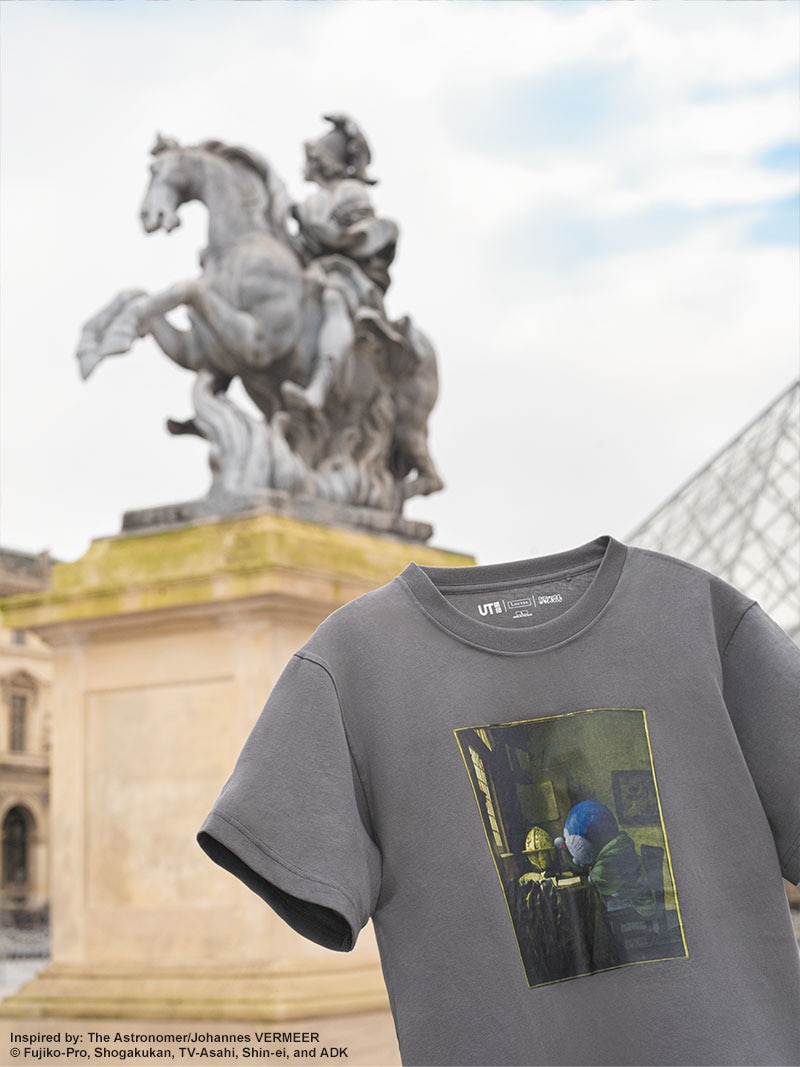
The Astronomer
The Astronomer (1668) was painted by Johannes Vermeer— a leading figure of 17th-century Dutch art, along with Rembrandt and is considered as one of his masterpieces. Portraits of scholars were a frequent motif of Dutch paintings in the 17th century, and in addition to The Astronomer, Vermeer also painted The Geographer. The celestial globe and book on astrological measurements placed on the table tell us about the state of the sciences at the time.
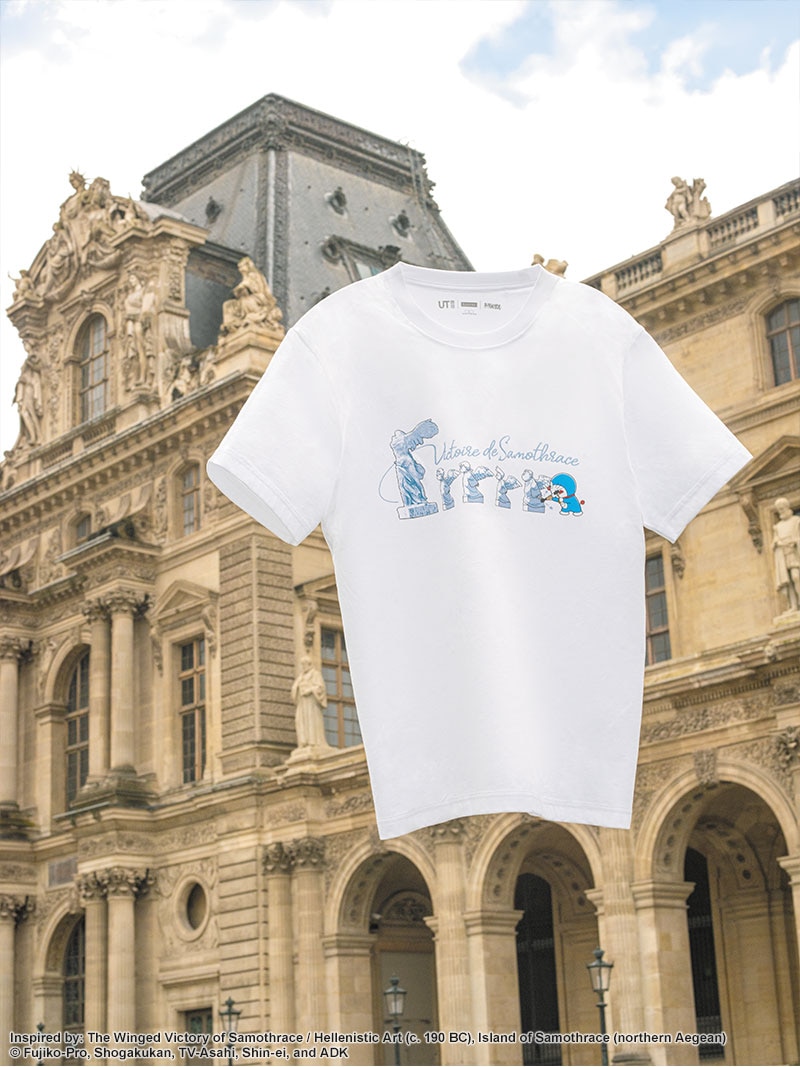
The Winged Victory of Samothrace
A marble sculpture carved by an unknown artist, circa 190 BC, The Winged Victory of Samothrace is thought to have been a votive offering by the people of Rhodes, Greece, in the early second century BC to commemorate a naval victory. This winged goddess of victory originally stood on the prow of a ship, overlooking the Sanctuary of the Great Gods at Samothrace.
Interview with Yukiyo Teramoto, Director of Doraemon the Movie: Nobita's Art World Tales
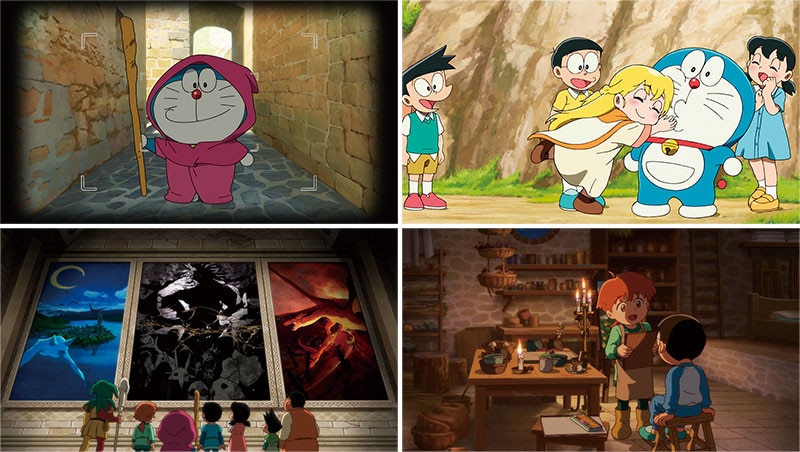
In this collaboration, masterpieces of painting and sculpture from the Louvre's collection appear together with Doraemon. Going on an adventure in a world of painting is also the theme of Doraemon the Movie: Nobita's Art World Tales, premiering this spring. We interview the director Yukiyo Teramoto about some of the film's highlights and what message about the appeal of and joy of art she hopes to convey through Doraemon.
*The film screening period varies by regions.
Q What led you to the idea of focusing on art and the world of painting?
The producer suggested the theme of paintings. The idea of using a painting as the gateway to an adventure came about during a script meeting with the writer Satoshi Ito and other staff members, and we tied that in with the Medieval European world.
Q What were some things you kept in mind during the film's production?
The world that Doraemon explores in this film is 13th-century Europe. Although the "Principality of Artoria" is a fictional country, the audience won't find it realistic unless we create a setting that feels believable. So I tried to strike a balance where people could imagine that this place might have existed. In order to create this sense of reality, I visited Italy for inspiration on towns and castles, and conducted interviews at Tokyo University of the Arts to learn about painting methods and so on.
Q What were some obstacles in creating a narrative around a world of painting?
I think it was especially difficult for the art department. I'm sure it was a lot of work because some of the scenes required different methods for the background art. For example, when the characters enter an oil painting, the team has to adjust the background to match that style.
Q When you look at a painting, do you ever imagine what kind of person created the work?
I think when you work as an anime creator, the personality of the person who made a painting or text stands out so clearly. I don't really wonder what kind of person painted something, instead I'll think things like, "I bet the person who made this is just as gentle as their artwork," or, "they must be a serious-minded person," or, “they're surprisingly loose with details." It's interesting to feel everything that comes up when looking at people's paintings.
Q What are some things you focused on to make sure the film conveys the appeal of art?
In 13th-century Europe, where the film is set, paper was not commonly available, so artists were painting on things like boards. Oil painting also hadn't been developed back then, so they created paint by mixing eggs and other things with powder pigment made from stones, plants, and so on. We put a lot of work into a scene where Mairo, a 13th-century boy whom Nobita befriends, creates paint by mixing various things into the pigment.
Q What are some of the highlights from the film?
From the initial idea, it took us over four years to create Art World Tales. Even the process of preparing for this project was longer than any of my previous three films. I hope the audience takes their time to enjoy the story and visuals that we put so much time and care into.
Q As a director, what is your everyday relationship to art and viewing and creating paintings?
Now that I draw and paint for work, there are many difficult moments, but I think I felt happy back when I was doing it simply because of a genuine desire and feeling of joy, like my student days. Even so, I feel really happy and joyful when I'm able to finish a piece despite all the hurdles, so at the end of the day, I do think I still love the process. The importance of really loving something is also one of the film's themes.
Q Given that colors play a key role in the film, what is your take on them?
What if there were no colors in the Louvre? It's scary even just to imagine, but in this film, there's a critical moment when all the colors risk vanishing from the world. I hope the film makes people appreciate how wonderful it is to live in a vibrant world full of colors.
Q In the T-shirts for the collaboration with UT and the Louvre, Doraemon dives into the world of masterpieces, such as Leonardo da Vinci's Mona Lisa, and The Winged Victory of Samothrace. What kind of stories come to mind when you see these images?
I'm sure that neither da Vinci nor Vermeer could have foreseen this kind of collaboration in the future, and I can imagine that Vermeer would be especially flabbergasted (laughs). But Dora-chan looks so cute as an astronomer. Although I think that we find The Winged Victory of Samothrace so beautiful and alluring because of its missing face and arms, I imagine that the creator would want people to see the figure in its entirety. It's fun to picture all sorts of things, like how surprised the artist would be to find out that the piece continues to move people even after 2,000 years.
Q If you were able to enter the world of a painting, which piece would you choose? And what kind of things would you want to do?
I would like to enter the world of a painting that's more design-oriented than realistic, like Gustav Klimt's The Tree of Life, or Kuniyoshi Utagawa's Miyamoto no Musashi: Attacking the Giant Whale. I'd be curious to see what my surroundings look like and what I would be like.
Q What do you think Doraemon the Movie: Nobita's Art World Tales and UNIQLO × The Louvre's “Art for All” concept have in common?
I made the film in the hope that even children who don't really like painting, just like Nobita in the story, could maybe enjoy it a bit more through Doraemon. When I first heard of the "Art for All"concept, which aims to increase people's opportunities to engage and feel more familiar with art, I felt it had a lot in common with this Doraemon film.
Q In closing, what message do you want the film to convey to the children of today?
When you enter a painting, you're opening the door to an adventure. I hope you also use your magical imagination to dive into the world of any art you love, whether that's paintings, manga,
children's books or anything else, and have fun with it! And I also hope you enjoy Doraemon the Movie: Nobita's Art World Tales!
Doraemon the Movie: Nobita's Art World Tales
A fragment of a painting suddenly appears in front of Nobita. When he uses a secret gadget, the Art Access Light, to enter the painting's world, he encounters a mysterious young girl. He joins her as she searches for the "Principality of Artoria,” which turns out to be a Medieval European world. So begins a grand adventure across time and space, as Doraemon and friends set off to find a rare gem.
Yukiyo Teramoto
She served as an episode director for the Doraemon TV series and was appointed as the franchise's first female feature-film director for Doraemon the Movie: Nobita's New Great Adventure into the Underworld (2007). She directed and storyboarded Doraemon the Movie: Nobita and the New Steel Troops: Winged Angels- (2011) as well as Doraemon the Movie: Nobita's Secret Gadget Museum (2013). This is her fourth film as director in the Doraemon film series.
A fragment of a painting suddenly appears in front of Nobita. When he uses a secret gadget, the Art Access Light, to enter the painting's world, he encounters a mysterious young girl. He joins her as she searches for the "Principality of Artoria,” which turns out to be a Medieval European world. So begins a grand adventure across time and space, as Doraemon and friends set off to find a rare gem.
Yukiyo Teramoto
She served as an episode director for the Doraemon TV series and was appointed as the franchise's first female feature-film director for Doraemon the Movie: Nobita's New Great Adventure into the Underworld (2007). She directed and storyboarded Doraemon the Movie: Nobita and the New Steel Troops: Winged Angels- (2011) as well as Doraemon the Movie: Nobita's Secret Gadget Museum (2013). This is her fourth film as director in the Doraemon film series.
©Fujiko-Pro, Shogakukan, TV-Asahi, Shin-ei, and ADK 2025
View items
All items
TOP


